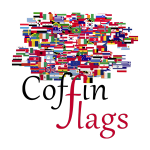Description
 Colombia, officially the Republic of Colombia, is a country largely situated in the north of South America, with land and territories in North America. Colombia is bounded on the north by the Caribbean Sea, the northwest by Panama, the south by both Ecuador and Peru, the east by Venezuela, the southeast by Brazil, and the west by the Pacific. It comprises thirty-two departments, with the capital in Bogotá. Colombia has the second-highest biodiversity in the world and is one of the world’s 17 mega-diverse countries; its territory encompasses the Amazon rain-forest, highlands, grasslands, deserts, and islands and coastlines along both the Atlantic and Pacific (the only country in South America).
Colombia, officially the Republic of Colombia, is a country largely situated in the north of South America, with land and territories in North America. Colombia is bounded on the north by the Caribbean Sea, the northwest by Panama, the south by both Ecuador and Peru, the east by Venezuela, the southeast by Brazil, and the west by the Pacific. It comprises thirty-two departments, with the capital in Bogotá. Colombia has the second-highest biodiversity in the world and is one of the world’s 17 mega-diverse countries; its territory encompasses the Amazon rain-forest, highlands, grasslands, deserts, and islands and coastlines along both the Atlantic and Pacific (the only country in South America).
The national flag of Colombia symbolises Colombian independence from Spain, gained on July 20, 1810. It is a horizontal tricolour of yellow, blue and red. The yellow stripe takes up the top half of the flag and the blue and red take up a quarter of the space each. According to the current interpretation, the colours signify; Yellow: Represents the riches of the country, the wealth of the Colombian soil, the gold, sovereignty, harmony, justice and agriculture, as well as the Sun, the source of Light. Blue: represents the seas on Colombia’s shores, the rivers that run through, and the sky above. Red: represents the blood spilt for Colombia’s independence and also the effort of the Colombian people, determination and perseverance. It represents that although Colombia’s people have had to struggle they have thrived. However, the flag has other representatives such as blue for loyalty and vigilance, red for victory in battles for Colombian independence, and finally yellow for sovereignty and justice.







